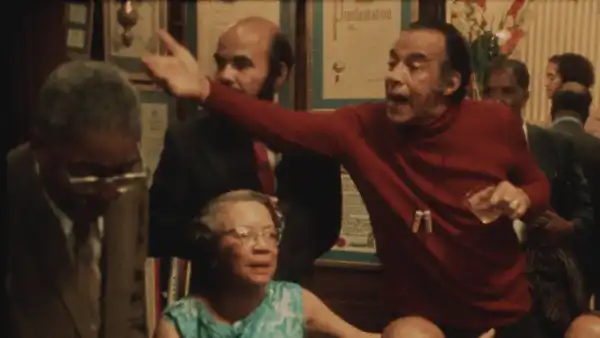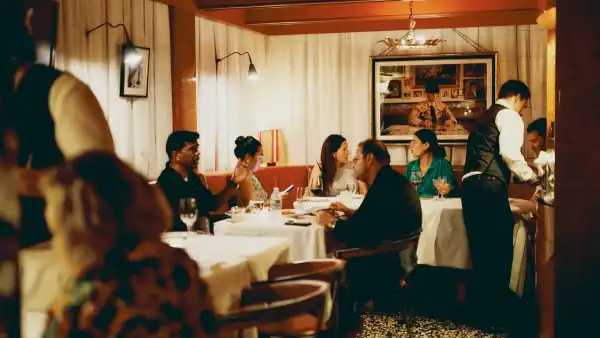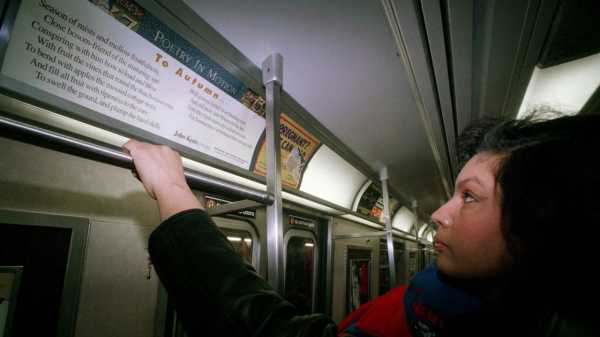
Those poems that you notice on New York City subways and buses first appeared in 1992, as part of a collaboration between the Poetry Society of America and the M.T.A.’s New York City Transit Authority. This year was one of celebration for the program, known as Poetry in Motion, and it’s concluding with a stylish and endearing exhibit at the New York Transit Museum, in Grand Central Terminal, a cozy gallery tucked behind the staircase near Vanderbilt Avenue.
On view are a wide range of the New York poem posters from the museum’s collection, a hundred in total, from the earliest—an excerpt from “Crossing Brooklyn Ferry,” by Walt Whitman (whose bicentennial year looms in 2019), “Hope is the thing with feathers,” by Emily Dickinson, “When You Are Old,” by William Butler Yeats, and “let there be new flowering,” by Lucille Clifton—to those poems recently featured in a square format that pairs them with public artwork commissioned by M.T.A. Arts & Design, led by Sandra Bloodworth. “There is a dialogue that happens between the artwork and the poetry that creates an additional layer of contemplation, whether you experience them individually or in tandem,” she said.
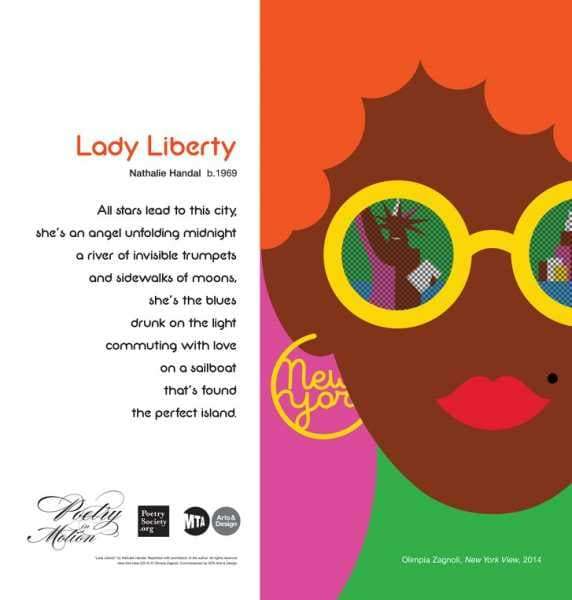
A poster of Nathalie Handal’s poem “Lady Liberty.”
Photograph Courtesy New York Transit Museum
A giant blowup of “Noche de Lluvia, San Salvador,” by Aracelis Girmay, features a mosaic by Elizabeth Murray titled “Stream,” from the M.T.A. New York City Transit’s Twenty-third Street–Ely Avenue Station. It was also chosen for the cover of the new anthology honoring the longevity and popularity of the program, “The Best of Poetry in Motion: Celebrating 25 Years on Subways and Buses.”
The exhibit was organized by Amy Hausmann, the Transit Museum’s senior curator and deputy director. As visitors wend their way through the nooks of poems, they can be overheard recalling first encounters with them and relishing them anew. A museum visitor named Susan Welber stopped by the gallery this week, greeted by Girmay’s poem, the one she loves most. “The poem elicited a feeling of elevation that I never forgot. I was so happy to rediscover it—looming large—at the very beginning of the exhibit.”
Hausmann—who has been involved with the program since 1997—has been conducting tours during the run of the show. “These poems speak to the diversity and cultural richness that make up our city,” she says. “Poetry that is discovered in unexpected places like a crowded subway car or a city bus can provide a window into another way of thinking and feeling about the world we inhabit. One of my favorites is Natalie Handal’s poem “Lady Liberty,” which is paired with vivid artwork by illustrator Olimpia Zagnoli. The artwork and poem fit together like pieces of a puzzle—the language and imagery complement and highlight each other. Seen together, they reflect the vibrancy and aspiration of our city.”
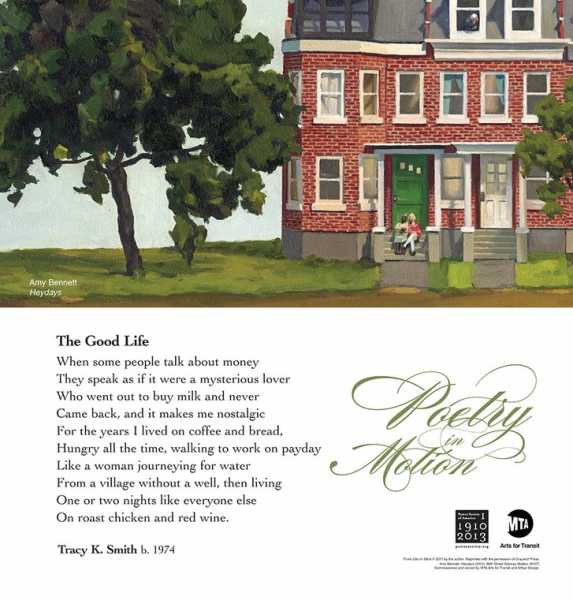
A poster of "The Good Life," by the U.S. Poet Laureate, Tracy K. Smith.
Photograph Courtesy New York Transit Museum
Tracy K. Smith, our current U.S. Poet Laureate, testifies to the power of the experience on the part of the poets: “When I was a grad student getting my M.F.A., the Poetry in Motion posters punctuated my commutes across New York City. They gave me morsels of ecstatic language to think about and carry with me. They affirmed my belief that everyone needs poetry. Having my own poem on display in the trains was an enormous affirmation. Even more emphatic was the feeling of community I got whenever I’d receive word from a fellow New Yorker who had glimpsed my poem ‘The Good Life’ on the commute. ‘Your poem touched me.’ Or, ‘I remember those days of living paycheck to paycheck that your poem describes.’ Or, ‘I’ve never really read poetry before, but I memorized your poem on my way to work today.’ The idea that my words have reached and touched people who weren’t even looking for them–the same way the poems that surprise and stick with me do—is nothing shy of a miracle.”
One of the most beloved poems, from a sequence titled “Love in the Ruins,” by Jim Moore, first appeared in The New Yorker, enshrining bygone days forever to be cherished.
I remember my mother toward the end,
folding the tablecloth after dinner
so carefully,
as if it were the flag
of a country that no longer existed,
but once had ruled the world.
Sourse: newyorker.com
